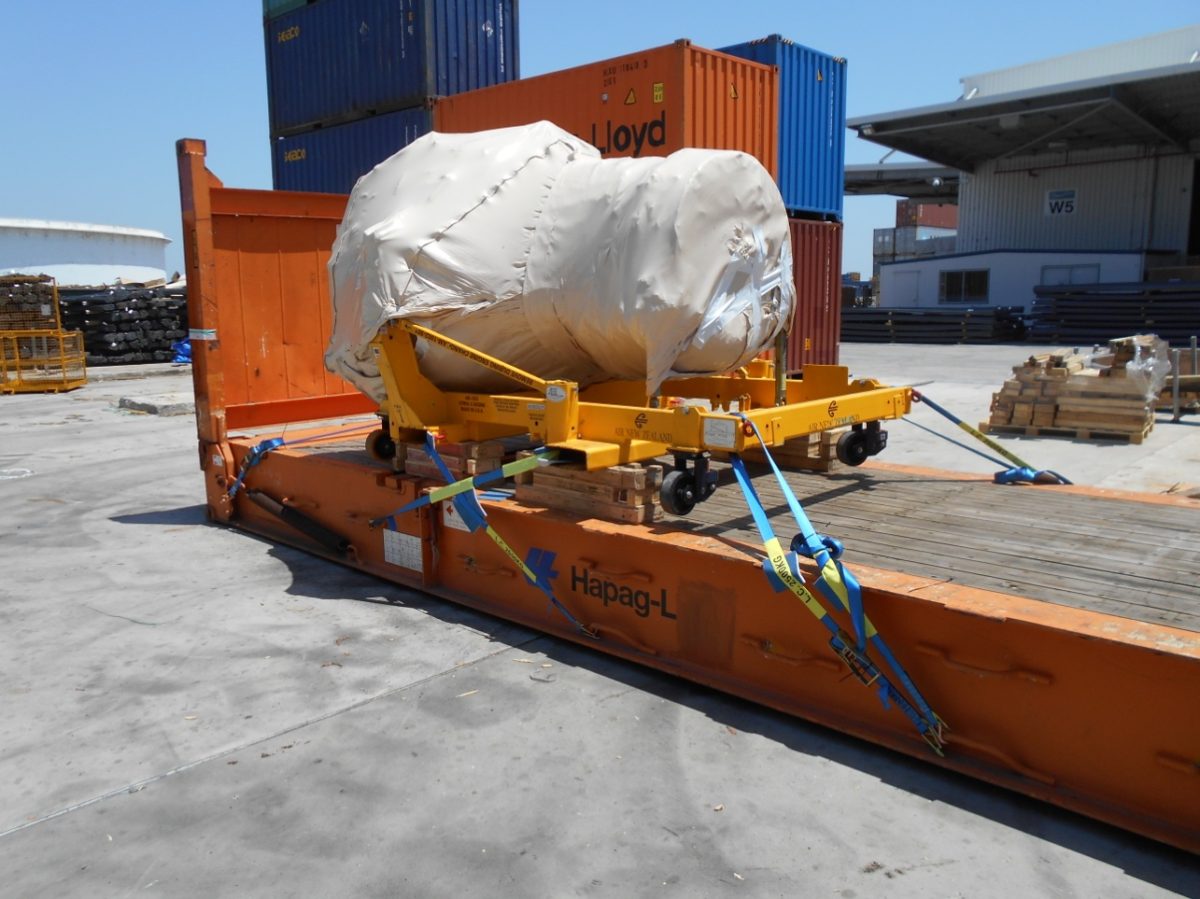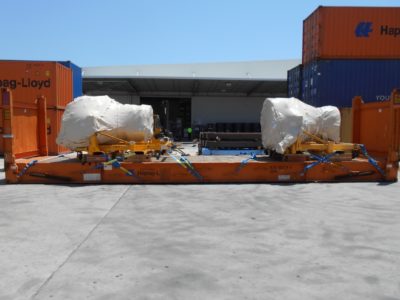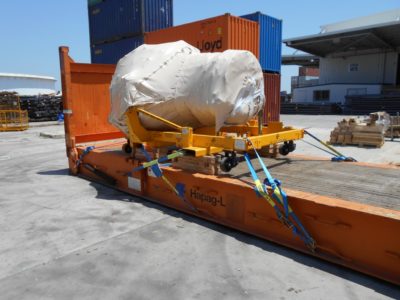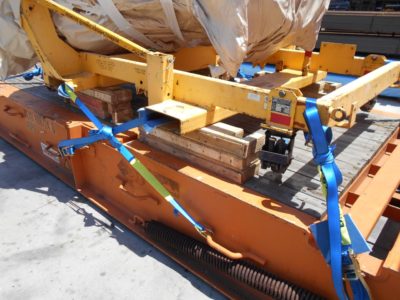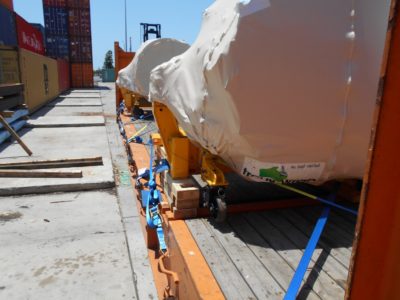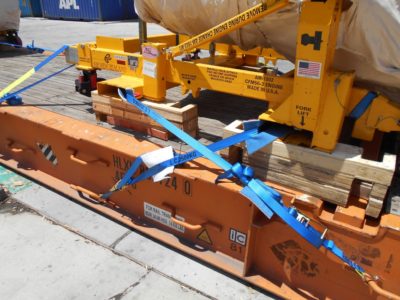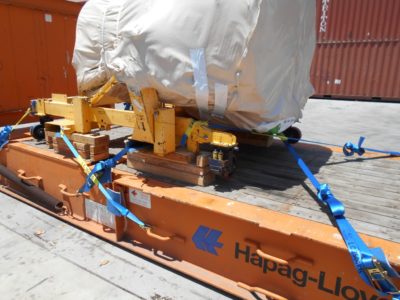This particular cargo is relatively straight forward as the jet engines are usually shipped on custom built trolleys which are specifically designed to support and protect these sensitive and expensive pieces of equipment.
The jet engines are secured to the trolleys by the engine mounts and hydraulic struts designed to absorb vibration and impact during the transport cycle, the trolleys are fitted with heavy duty rotating nylon wheels for ease of movement.
The two jet engines were placed on the flat rack with timber blocks under each side of the trolleys to keep the wheel off the flat rack deck, this procedure is followed in order to avoid the wheels having contact with the deck causing movement.
Additionally and more importantly when tensioning the Thylacine International Polyester straps & Ratchet load binders the downward force is absorbed by the timber under the trolleys and not the wheels which would result in damage.
As a guide when securing cargo for transport the net weight of the cargo is multiplied by three then divided by the safe working load (SWL) of the securing equipment to give the number of lashings required.
However there are exceptions to this particular practice, the jet engines for example were said to weight 5,850 kg, applying the guide of:
3 x 5.85 = 17.46 ÷ 2.5 (SWL of ratchets) = 6.98 (7) lashings to secure the cargo.
Owing to the shape and value of the cargo three or four polyester straps & ratchets load binders would not provide securing on each corner, as a consequence six Thylacine International polyester straps & ratchets load binders were used to secure each jet engine.
The link below is to an article showing the results of inadequate cargo securing and the inherent dangers of complacency and ignorance when cargo securing is not undertaken by suitably qualified and experienced persons.


